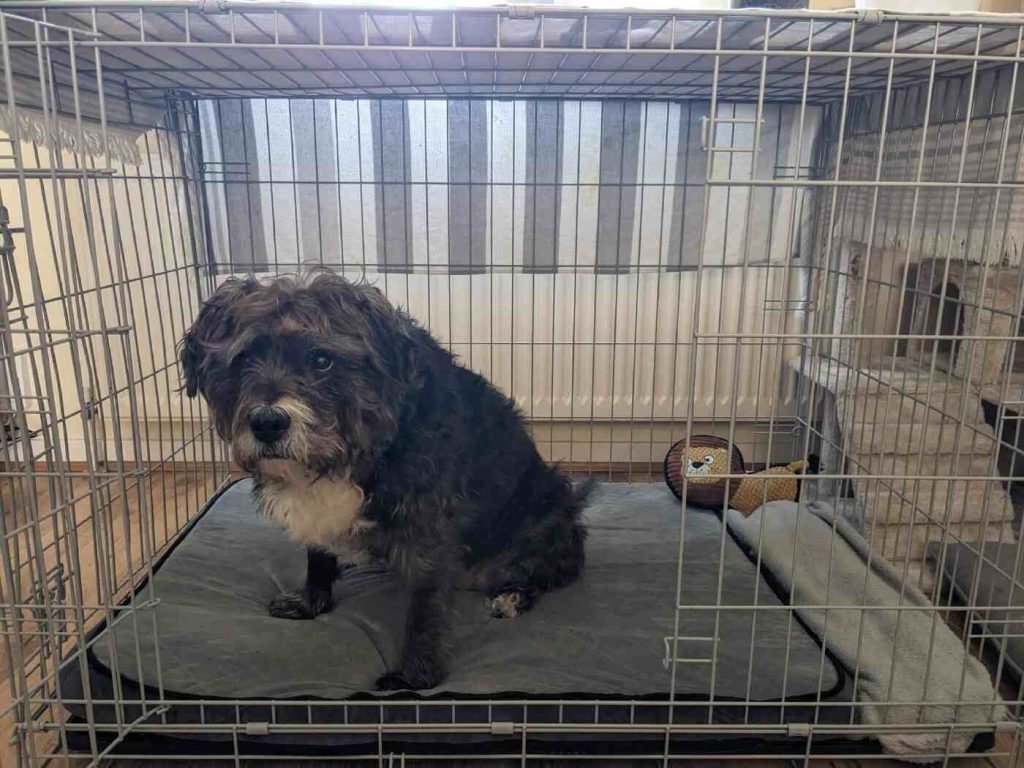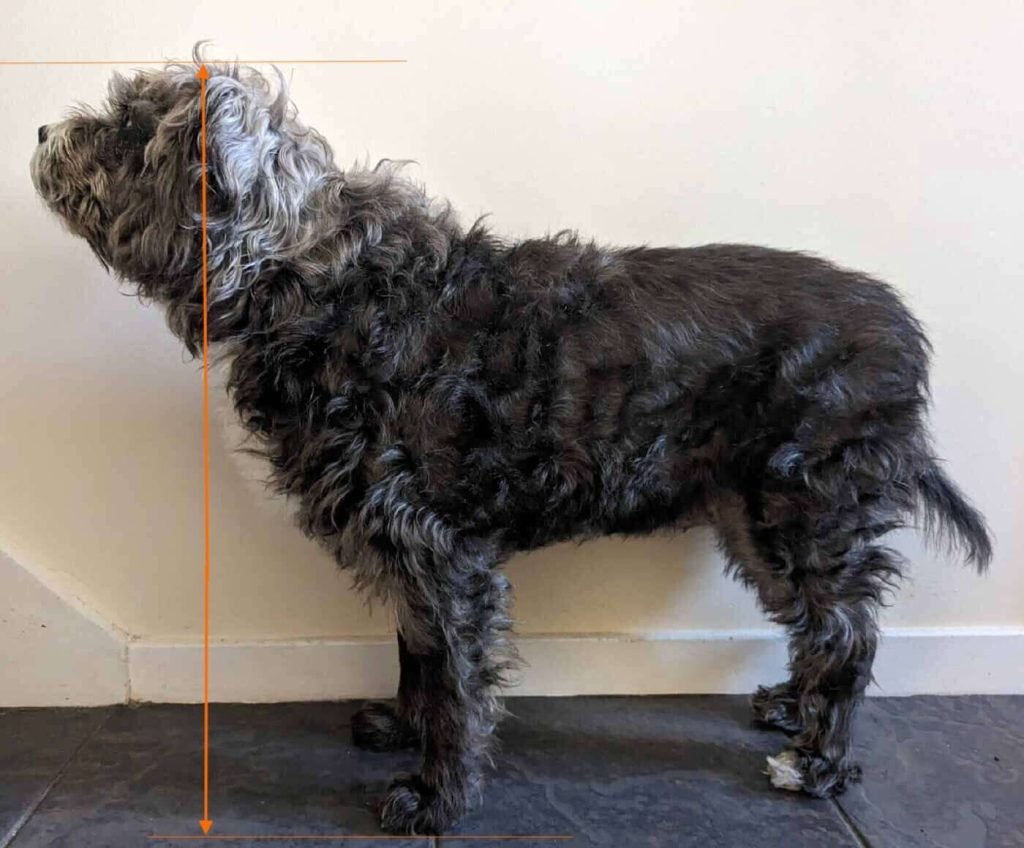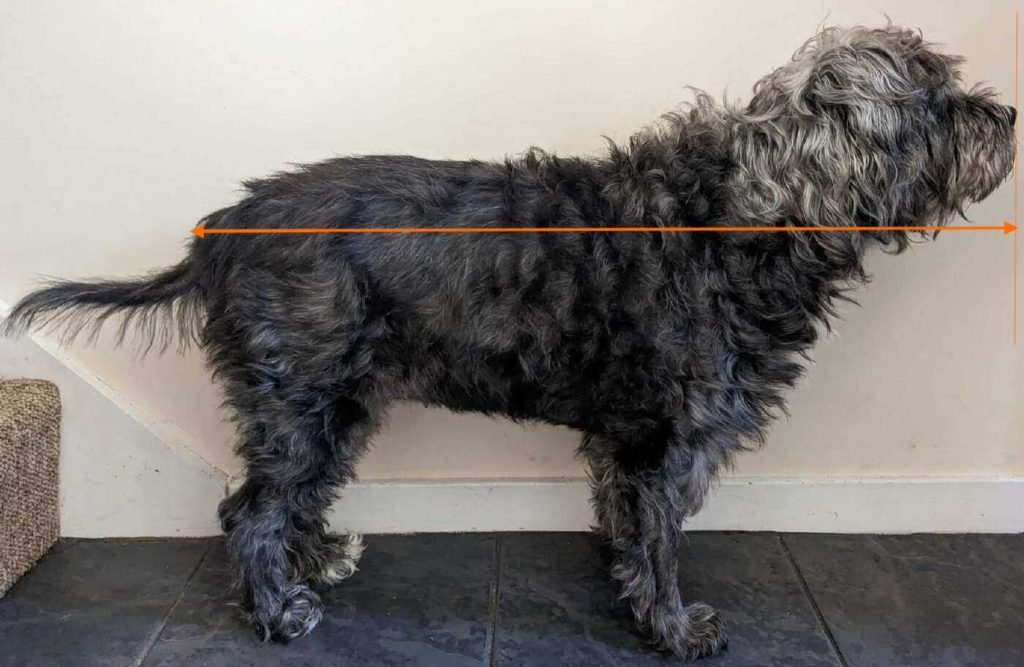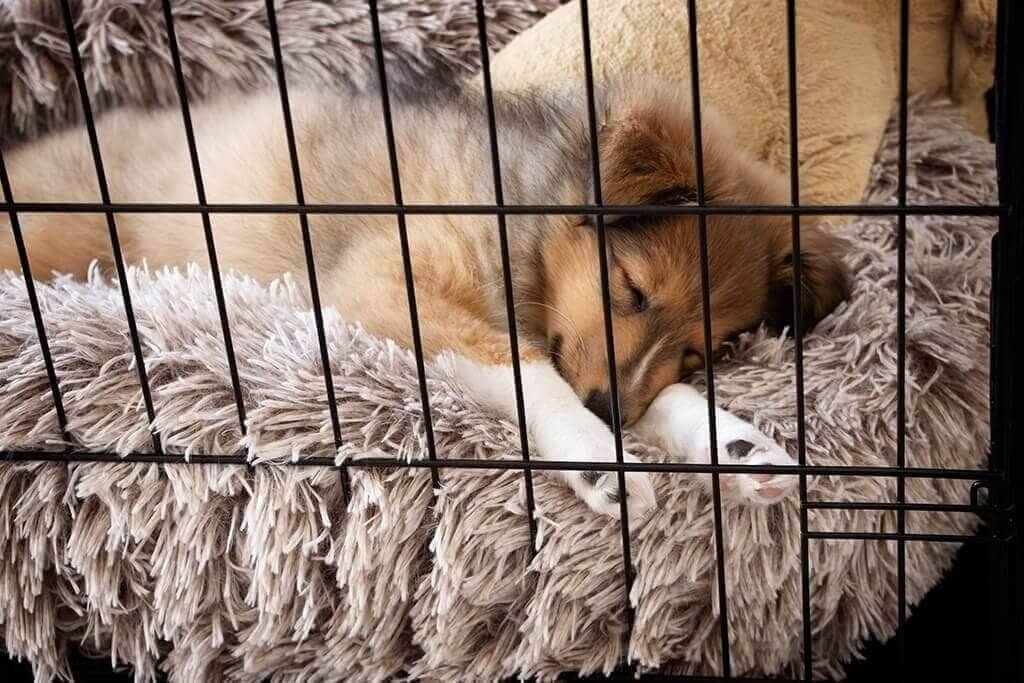Dog crates provide them with a den, where they can feel safe and secure, especially when resting or unsupervised. Choosing the right size to meet these premises can be challenging, and making the wrong choice can result in an anxious dog or that urinates where they should not. As a vet, we see behavioral issues like this all the time. In this article we aim to help you finding the answer to the question: “what size dog crate, kennel or cage -whatever you choose to call it- do I need for my dog?”

Some things to bare in mind before starting:
- Weight is not as relevant as the height and length of your pet.
- You will need a tape measure, ideally a soft or sewing tape measure.
- Not all adult dog breeds will measure the same: you must take into account the size of their ancestors (especially if they are crossbreed), the gender, and if it is a puppy, as it is obviously going to grow.
- Your ideal crate should always be 15 cm/6 inches longer than the length of your pet and 15 cm/6 inches higher than their shoulder height.
How to take your dog’s measurements
First of all, their body height – you should measure from the ground to the highest point of their head, either their ears, nose, or forehead (as demonstrated in the following photo provided by our senior model Ruby), either sitting or standing. In any case, you will have to use the higher measurement.

Secondly, their body length – you will need to measure from their tip of the nose to the base of the tail (not including the tail, regardless of the breed).

You should not have to worry about the width, as it is already taken into account when they set available sizes.
The ideal crate size for your dog
Although it depends on some considerations (as explained in the first part of this post), below you will find a table with typical cage sizes that you will find on the Internet, and which breeds they are usually suitable for. Please remember that you should always measure your pet first and take their ancestors’ size into account.
|
Typical crate measurements |
Most common breeds suitable for |
|---|---|
|
18 inches/46 cm |
Teacup Chihuahua, teacup Yorkshire Terrier, Toy Poodle |
|
24 inches/61 cm |
Maltese, Chihuahua, Shih Tzu, Pomeranian, miniature Dachshund, West Highland Terrier, Cairn Terrier, Scottish Terrier, Italian Greyhound, Poodle, Schnauzer, Cocker Spaniel, Boston Terrier
|
|
30 inches/76 cm |
French Bulldog, Pug, Border Terrier, Beagle, Chow Chow, American Staffordshire, Cockapoo |
|
36 inches/91 cm |
Dalmatian, American Pit Bull, Australian Shepherd, Labradoodle, Springer Spaniel, Cockapoo |
|
42 inches/106 cm |
Boxer, English Bull Terrier, Labrador, German Pointer, Malinois, Airedale Terrier
|
|
48 inches/121 cm |
German Shepherd, Akita, Greyhound, Rottweiler, Siberian Husky, Weimaraner, Bullmastiff
|
|
60 inches/152 cm |
Bernese Mountain Dog, Great Dane, Irish Wolfhound, Newfoundland
|
FAQ
How much room does a dog need in a crate? Can a dog crate be too big?
It really depends on what you are planning to use it for. The idea is that it should be small enough to make them feel contained and secure, but at the same time big enough for them to turn around both standing and lying down, and to stretch out.
If it is too small, it will certainly cause anxiety, and if it is too big, it will have room to pee and can be extremely dangerous if we are going to use it to transport our pet in the car, for example.
What size puppy crate do I need?
It really depends on your puppy’s breed, as some large breeds, for example, will definitely need a different crate as they grow. As explained above, you don’t want a cage that is too big, but not too small either.

One of the best investments you may do is actually getting a dog crate that fits your pet’s adult size, but that comes with a panel that allows you to divide the cage so your puppy cannot access the whole crate from a young age. You will basically move this panel as they grow to make the crate “bigger”.
